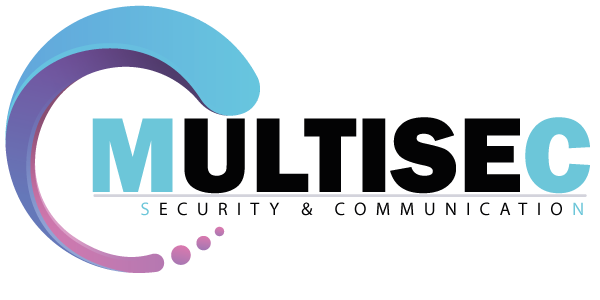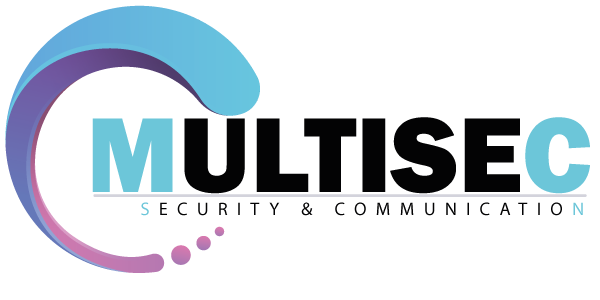
This includes cash and cash equivalents, marketable securities, and current accounts receivable. While converting quick assets into cash, the company shouldn’t incur high costs. For an asset to be a quick asset, there should be minimal to no loss in value during the conversion of these assets to cash.
SunPower Price Target Cut by Truist Financial, Stock Rated “Hold” – Fagen wasanni
SunPower Price Target Cut by Truist Financial, Stock Rated “Hold”.
Posted: Thu, 03 Aug 2023 07:39:37 GMT [source]
Any time the quick ratio is above 1, then quick assets exceed current liabilities. Now consider Company B, which has current liabilities of $15,000 and quick assets comprising $10,000 cash and $4,000 of accounts receivable, with customer payment terms of 30 days. For example, suppose Company A has current liabilities of $15,000 and quick assets comprising $1,000 cash and $19,000 of accounts receivable, with customer payment terms of 90 days. The quick ratio and current ratio are two metrics used to measure a company’s liquidity.
What It Means for Individual Investors
This capital could be used to generate company growth or invest in new markets. There is often a fine line between balancing short-term cash needs and spending capital for long-term potential. Consider that a clothing boutique is applying to a financial institution for a loan in order to remodel its store. A lender would need to compute the quick ratio and ask for the balance sheet from the store owner.
Maintaining an optimal quick ratio may also help you get favorable interest rates if you need a loan, and it can make your company more attractive to investors. With customer invoices as collateral, the lender gives the borrower cash or a line of credit, normally 70% to 90% of the value of the accounts receivable. In publication by the American Institute of Certified Public Accountants (AICPA), digital assets such as cryptocurrency or digital tokens may not be reported as cash or cash equivalents. Our first-half profit before tax of $21.7bn included a number of notable items. They included the reversal of the impairment relating to the planned sale of our retail banking operations in France and a provisional gain following the acquisition of SVB UK in March.
Related Accounting and Finance Skills
This way, you’ll get a clear picture of a company’s liquidity and financial health. A quick ratio below 1 shows that a company may not be in a position to meet its current obligations because it has insufficient assets to be liquidated. This tells potential investors that the company in question is not generating enough profits to meet its current liabilities. On the other hand, a company could negotiate rapid receipt of payments from its customers and secure longer terms of payment from its suppliers, which would keep liabilities on the books longer. By converting accounts receivable to cash faster, it may have a healthier quick ratio and be fully equipped to pay off its current liabilities.
The quick ratio is a more conservative measure of liquidity than the current ratio. The quick ratio and current ratio are accounting formulas small business owners can use to understand liquidity. While the quick ratio uses quick assets, the current ratio uses current assets. The current ratio formula is current assets divided by current liabilities. If a company’s financials don’t provide a breakdown of its quick assets, you can still calculate the quick ratio.
Essentially, the ratio seeks to figure out if a company has enough liquid assets (cash or things that can easily be converted into cash) to cover its current liabilities and impending debts. A key point to note, though, is this isn’t a test to see how much debt a company has or if it could seek financing to cover any current debts. Rather, the quick ratio just looks at whether a company’s liquid assets outnumber its liabilities. The quick ratio also measures the liquidity of a company by measuring how well its current assets could cover its current liabilities.
Marketable Securities
Since the current ratio includes inventory, it will be high for companies that are heavily involved in selling inventory. For example, in the retail industry, a store might stock up on merchandise leading up to the holidays, boosting its current ratio. However, when the season is over, the current ratio would come down substantially.
At the end of the forecast period, Year 4, our company’s ratio remains relatively unchanged at 0.5x, which is problematic as the concerns regarding short-term liquidity remain. Suppose a company has the following balance sheet financial data in Year 1, which we’ll use as our assumptions for our model. In fact, such a company may be viewed favorably by the equity or debt capital markets and be able to raise capital easily. Individual investors who pick their own stocks instead of buying index funds or actively managed mutual funds may want to consider the quick ratio as part of their analyses.
Zacks’ 7 BestStrong Buy Stocks for August, 2023
For example, a company with a low ratio might not be at too much of a risk if it has non-core fixed assets on standby that could be sold relatively quickly. If the ratio is low, the company should likely proceed with some degree of caution, and the next step would be to determine how and how quickly more capital could be obtained. Companies will often post their quarterly and annual financial reports, including their balance sheets, on their websites. You also can search for annual and quarterly reports on the Securities and Exchange Commission website. More detailed analysis of all major payables and receivables in line with market sentiments and adjusting input data accordingly shall give more sensible outcomes which shall give actionable insights. With NetSuite, you go live in a predictable timeframe — smart, stepped implementations begin with sales and span the entire customer lifecycle, so there’s continuity from sales to services to support.
- Or if a company’s quick ratio is high because it’s struggling to sell its products (i.e., it’s accumulating cash because sales are low), that’s a potential red flag.
- As the quick ratio only wants to reflect the cash that could be on hand, the formula should not include any receivables a company does not expect to receive.
- Liquid assets are those that can quickly and easily be converted into cash in order to pay those bills.
- Our first-half results show we have built a good platform for growth while maintaining cost and balance sheet discipline.
- For an item to be classified as a quick asset, it should be quickly turned into cash without a significant loss of value.
In other words, the company is making enough profit to pay off its current liabilities without having to sell long-term assets. It is defined as the ratio between quickly available or liquid assets and current liabilities. Quick assets are current assets that can presumably be quickly converted to cash at close to their book values.
Quick Ratio vs Current Ratio
The quick ratio compares the short-term assets of a company to its short-term liabilities to evaluate if the company would have adequate cash to pay off its short-term liabilities. You can find the value of current liabilities on the company’s balance sheet. The quick ratio is also known as the acid test ratio, a reference to the fact that it’s used to measure the financial strength of a business. A business with a negative quick ratio is considered more likely to struggle in a crisis, whereas one with a positive quick ratio is more likely to survive. It’s wise to search for companies that offer solid returns even after meeting all operating and non-operating costs. In other words, investors should seek a profitable company over a loss-making one.
A quick ratio of 2, as calculated above, indicates that the company has twice as many easily liquidated assets as it has short-term liabilities. This suggests that the company could theoretically pay off all its short-term liabilities and still have an equal amount of its most liquid assets left over. And that’s the essence of the quick ratio—it wants to know about the cash and the baked goods (the easily liquidated stuff), but it isn’t interested in the flour and sugar (the not-so-easily liquidated stuff).
In simple terms, the quick ratio shows the relationship between a company’s assets that can be liquidated or received quickly and its current liabilities. To calculate the quick ratio, we need the quick assets and current liabilities. For example, if a company has $1,000 in current liabilities on its balance sheet. But also has $1,500 in quick assets, so its quick ratio is 1.5, or $1,500 / $1,000. A strong current ratio greater than 1.0 indicates that a company has enough short-term assets on hand to liquidate to cover all short-term liabilities if necessary.
Since it indicates the company’s ability to instantly use its near-cash assets (assets that can be converted quickly to cash) to pay down its current liabilities, it is also called the acid test ratio. An “acid test” is a slang term for a quick test designed to produce instant results. If it is less than 1, the low quick ratio will not allow the company to pay off its current liabilities outstanding in the short term entirely. However, if the ratio is higher than 1, the company retains such liquid assets to discharge its current liabilities immediately.
Most companies will try to keep their quick ratio anywhere from 1.2 to 2.0. As an example, a quick ratio of 1.4 would indicate that a company has $1.40 of current assets available to cover each $1 of its current liabilities. A quick ratio of 1.0 or higher indicates that a company can meet its current obligations without selling fixed assets or inventory. When analyzing a company’s liquidity, no single ratio will suffice in every circumstance. It’s important to include other financial ratios in your analysis, including both the current ratio and the quick ratio, as well as others.
Such factors include the industry it operates in, the markets it serves, its maturity, type of business, the cycle of debtors and creditors, and its creditworthiness. Like your assets, you’ll only want to include your current liabilities when calculating the quick ratio. You would not include prepaid insurance, employee advances, and inventory assets since none of those items can be quickly converted to cash.
Accounts payable, or trade payables, reflect how much you owe suppliers and vendors for purchases. For example, if you have a five-year loan for a vehicle, julian edelman adp the next 12 months of payments will be a current liability. Current liabilities are financial obligations that the firm must pay within a year.
Potential creditors want to know whether they will get their money back if a business runs into problems, and investors want to ensure a firm can weather financial storms. Accounts receivable, cash and cash equivalents, and marketable securities are the most liquid items in a company. The quick ratio has the advantage of being a more conservative estimate of how liquid a company is. Compared to other calculations that include potentially illiquid assets, the quick ratio is often a better true indicator of short-term cash capabilities. Because prepaid expenses may not be refundable and inventory may be difficult to quickly convert to cash without severe product discounts, both are excluded from the asset portion of the quick ratio.


Leave a Comment